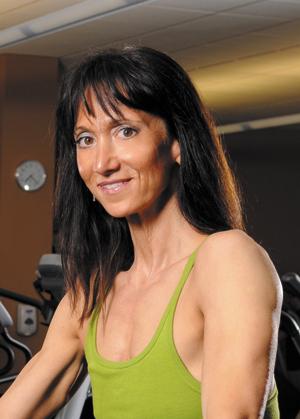A quarter-century of fitness
Published August 8, 2013
Those of you who follow my blog have no doubt come to realize how very important fitness and wellness are to me. Whether I am teaching classes, training clients, counseling on nutrition, or doing my own workouts, I honestly do love this lifestyle. This Friday, Aug. 9 marks 25 years that I have been involved in the fitness industry. That is the date when I first became an employee of the JCC, and it has been a fantastic journey indeed.
As one might imagine, the “fitness craze” has seen numerous changes over the past quarter of a century. From leg warmers and Jane Fonda, to Richard Simmons sweating with the oldies, through the dawn of Jazzercise, we have seen many forms of exercise dominate…and then crumble by the wayside. I recently came across an article written in 1988 — 25 years ago — by a professor in the Department of Physical Education at the University of South Carolina, Columbia. In it Professor Russell Pate shares with us his insights on physical fitness: “It is proposed that the physical education profession’s primary concern should be for promotion of health-related physical fitness, defined as a state characterized by (a) an ability to perform daily activities with vigor, and (b) demonstration of traits and capacities that are associated with low risk of premature development of hypo-kinetic diseases (i.e., those associated with physical inactivity).” Upon reading this interpretation, I began to ponder how Professor Pate’s suggestion might relate to today’s goals in terms of physical fitness.
Each of us enters the gym with a unique set of goals in mind. Some wish to lose weight; others are striving to increase endurance and improve cardiovascular health. Still others are seeking to add muscle mass and become stronger, while there are those among us whose main goal is to increase flexibility. While the results being sought may seem disparate upon first glance, they all share a common thread, and that can be summed up quite succinctly by the good professor’s phrase “promotion of health-related physical fitness”. Each of these goals, when achieved, will lead one in the direction of better health, which encompasses the ability to perform activities of daily living with a renewed sense of vitality and energy. It matters not how one reaches those goals, although it is fun to trot down memory lane and recall the myriad of ways in which we have attempted to achieve fitness success over the past 25 years. Some fads have actually made a comeback, such as the hula hoop; and some are better left in the dust, such as the good old “Thigh-Master”! However we arrived at improvements in stamina, strength and flexibility, the most important gain was the upper hand over premature illness, both physical as well as psychological.
Today, we seem to enjoy a plethora of benefits associated with the general term “fitness”. We learn about aspects of better nutrition and the proper timing of nutrient intake to optimize our workouts; the importance of hydration; and the role that rest plays in enhancing our physical goals. While these subtleties may not have figured quite so prominently in the definition put forth in 1988, we seem to have come full circle in the belief that a physical lifestyle is key in promoting better health and overall wellness. Whatever you have been doing for the past 25 years to stay healthy, fit and active, by all means, continue on your path. I certainly hope to do the same.















